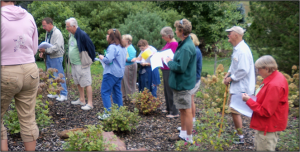 As an Extension Agent, I worked with MGEVs who loved to host tours of a small local arboretum on a community college campus. The tour was the same each time, repeated back from the pages of a worn notebook. The stories were retold about how the garden started as a bare patch of land, how it was reclaimed, and how many plant sales were conducted to raise the funds to establish the garden. Yet, the garden was PACKED with unique plant materials, examples of garden construction, and ongoing maintenance that exemplified environmental stewardship. There were more untold stories in that garden than all the second graders who came to visit!
As an Extension Agent, I worked with MGEVs who loved to host tours of a small local arboretum on a community college campus. The tour was the same each time, repeated back from the pages of a worn notebook. The stories were retold about how the garden started as a bare patch of land, how it was reclaimed, and how many plant sales were conducted to raise the funds to establish the garden. Yet, the garden was PACKED with unique plant materials, examples of garden construction, and ongoing maintenance that exemplified environmental stewardship. There were more untold stories in that garden than all the second graders who came to visit!
If yo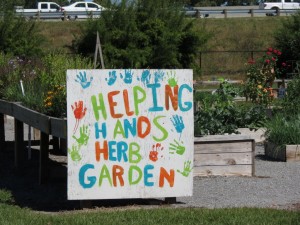 u have a demonstration garden, I encourage you to think creatively about how you can present the garden to your community through instructional tours. You can develop many different tours of your garden by picking themes or a horticultural topic that can be illustrated or demonstrated with things in your garden. Examples include herbs, early-spring-blooming plants, fragrance in the garden, and water-wise landscape practices.
u have a demonstration garden, I encourage you to think creatively about how you can present the garden to your community through instructional tours. You can develop many different tours of your garden by picking themes or a horticultural topic that can be illustrated or demonstrated with things in your garden. Examples include herbs, early-spring-blooming plants, fragrance in the garden, and water-wise landscape practices.
Tours need to be cohesive and result in a complete thought. Each stop on the tour adds supporting information to the focus topic of the tour. Once you have determined the horticultural focus of the tour, come up with 3 to 5 points that explain it. Next, outline the information for each point that you want to convey in the tour. Three examples for each point will make a great tour.
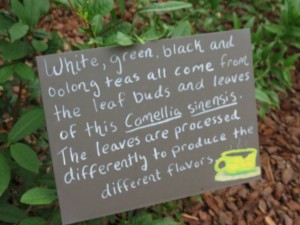 Think of where in the garden it is best to see these points illustrated. If you have three points to your tour with three examples each, you’ll have 9 sentences. If you have five points to your tour with three examples each, you’ll have 15 sentences. Think of the finished product as a paper with 10 to 15 sentences, each corresponding to something in the garden, and bookended with an introduction and conclusion.
Think of where in the garden it is best to see these points illustrated. If you have three points to your tour with three examples each, you’ll have 9 sentences. If you have five points to your tour with three examples each, you’ll have 15 sentences. Think of the finished product as a paper with 10 to 15 sentences, each corresponding to something in the garden, and bookended with an introduction and conclusion.
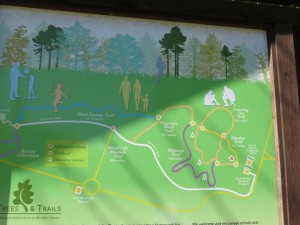 Next, set the order of the tour. Determine which order the locations should be visited, how much time spent at each stop. Think through transition statements that can be used between stops. Transitions are the lead-in to the next location and/or concept on the tour. Make connections between the points of the tour and the plants and practices that tour participants are seeing.
Next, set the order of the tour. Determine which order the locations should be visited, how much time spent at each stop. Think through transition statements that can be used between stops. Transitions are the lead-in to the next location and/or concept on the tour. Make connections between the points of the tour and the plants and practices that tour participants are seeing.
Last, create a conclusion. If possible, bring the group to a point where many of the items you have discussed come together in one place. Summarize your tour by restating the points that you made. Thank the audience for attending. Remind them of upcoming events at the garden. Direct them to an evaluation or follow-up step, if applicable. Gather names and email addresses for future correspondence, etc.
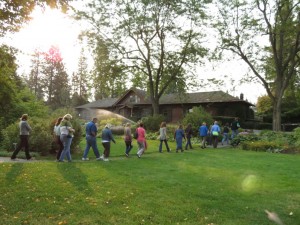 Don’t miss out on your chance to get a lot of bang out of your demonstration garden with instructional tours. There are so many topics you could cover. Heck! You could even develop a tour discussing weeds – but I bet no MGEV demonstration garden has those, right?
Don’t miss out on your chance to get a lot of bang out of your demonstration garden with instructional tours. There are so many topics you could cover. Heck! You could even develop a tour discussing weeds – but I bet no MGEV demonstration garden has those, right?
